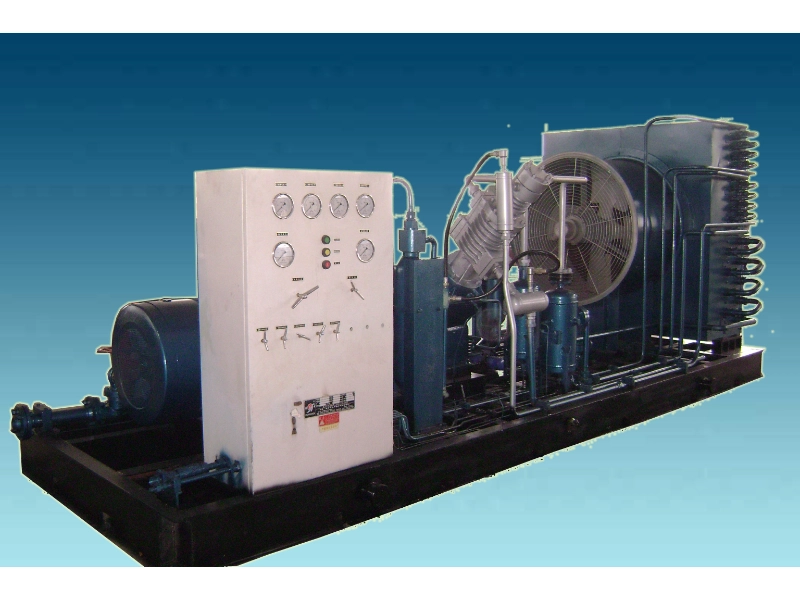In the path of power production and transportation, natural gas compressors often stay in the background, unnoticed by the common user. Yet, these vital instruments play a key role in making sure that natural gas arrives at our houses, companies, and electric facilities securely and effectively. By squeezing gas, they ensure compression, minimize volume, and facilitate the flow of this essential supply through extensive conduit networks.
Comprehending the functionality and significance of natural gas compressors, such as the Standard Station Compressor and the Substation Compressor, reveals their contributions to our power system. These units not only boost the functional efficiency of the distribution system but also help the growing need for sustainable power. As we investigate the complex workings of these devices, we begin to appreciate the overlooked heroes of the power industry that support energize our daily existence.
Grasping Natural Gas Standard Distribution Compressors
Standard station compressors for natural gas play a vital role in the energy sector by facilitating the smooth transportation of natural gas from extraction points to consumers. Such compressors are carefully located at different points throughout the pipeline system to maintain the pressure and flow of gas, allowing it to be transported long distances. By reducing the volume of the gas, these devices reduce its volume, making it easier to transport through pipelines and ultimately deliver it to home, industrial, and manufacturing users.
The performance of standard station compressors is crucial to the reliability of the natural gas supply chain. They are designed to accommodate varying demand and adjust to changes in gas requirements. When natural gas demands rise, these compressors boost their efficiency to maintain appropriate pressure levels, making sure that users get a steady supply. Furthermore, they utilize cutting-edge technology to improve efficiency and reduce operational costs while complying to safety standards.
Effective maintenance and monitoring of natural gas standard station compressors are essential for operational longevity and safety. Regular servicing helps prevent breakdowns and guarantees that compressors operate at maximum efficiency. By spending in maintenance and upgrading components with the latest technology, operators can substantially enhance the reliability of the gas supply, benefiting both suppliers and consumers and highlighting the importance of these unsung heroes in the energy landscape.
The Role of Natural Gas Substation Compressors
Natural gas substation compressors play a critical role in the delivery of NG from pipelines to residential and commercial consumers. These devices ensure that the gas maintains adequate pressure as it moves through multiple stages of the distribution network. By increasing the pressure, these compressors facilitate the smooth flow of gas, making it accessible to consumers without major loss of volume or pressure.
In addition to pressure regulation, natural gas substation compressors enhance the effectiveness of the gas supply system. They reduce the energy loss during shipment by maintaining ideal flow conditions, which is crucial for meeting the demand variations that occur throughout the day. By being optimally placed in hongshencompressor.com , these compressors enable a more flexible and robust energy supply chain.
Moreover, the integration of advanced surveillance and control technologies in substation compressors allows for real-time adjustments based on demand variations. This capability ensures that the gas supply is both dependable and effective, ultimately contributing to the reliability of the energy grid. The significance of these compressors cannot be emphasized, as they act as the foundation of the natural gas distribution system, ensuring that gas reaches users safely and dependably.
Innovations in Compressor Technology
The field of natural gas compressors has been evolving with technics advancements aimed at boosting effectiveness and minimizing greenhouse effects. Modern natural gas typical station compressors are now being designed with innovative materials and design techniques that improve their durability and capability. These low-emission compressors utilize high-tech controls to maximize gas delivery and minimize waste, guaranteeing that energy is used more effectively during the compression process.
Moreover significant development is the integration of smart technology into compressor systems. By incorporating IoT (Internet of Things) capabilities, operators can track functionality in the moment and examine data to predict maintenance needs before complications arise. This preventative approach not only extends the life of the compressors but also reduces downtime, ultimately culminating in financial savings for operators. Natural gas substation compressors are at the forefront of this smart transition, utilizing sophisticated algorithms to modify operations based on request fluctuations.
Ultimately, ecological considerations are driving the development of eco-friendly compressor designs. New models are being designed to use renewable energy sources where feasible, as well as adding carbon capture technologies that help mitigate emissions. As standards tighten globally, these innovations place natural gas compressors as essential players in the movement towards a more green energy future, guaranteeing they remain essential for energy infrastructure while reducing their greenhouse impact.

